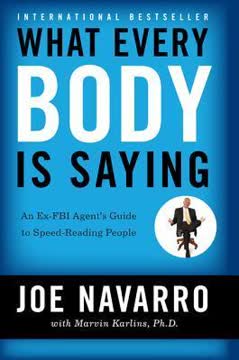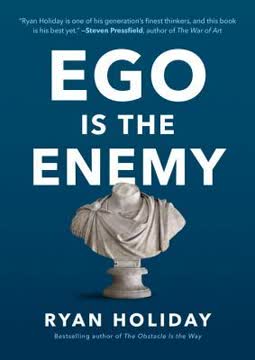Key Takeaways
1. Short-Term Thinking: The Key to Influence
Successfully bringing those four factors to bear compels people to do whatever it is we want them to do.
Understanding Short-Term Thinking. Short-term thinking involves narrowing a person's focus to immediate factors, reprioritizing their concerns to favor your desired outcome. This is achieved by capitalizing on inherent vulnerabilities to influence, repetition, diminishing independent thought, and minimizing perceived consequences. The infomercial is a prime example, using repetition and limited-time offers to bypass rational decision-making.
The Four Factors. The four factors that propel us into short-term thinking mode are:
- Inherent vulnerability to influence: We have no means of asking any questions or challenging any claims.
- Repetition: The higher the number of instances we hear something, the greater the likelihood we’ll accept it.
- Loss of independent thinking: The very act of viewing the infomercial is one that likely wasn’t actively chosen of your own accord.
- Lack of immediately identifiable consequences: All they ask you to do is make a telephone call. What harm is there in that?
Application in Interrogation. This principle is directly applicable to interrogation, where the goal is to elicit truth from someone motivated to conceal it. By controlling the immediate factors influencing their decision, interrogators can guide individuals toward revealing information they would otherwise withhold. This involves temporarily replacing their long-term concerns (e.g., legal repercussions) with immediate considerations (e.g., the perceived benefits of cooperation).
2. Best-Case/Worst-Case Continuum: Aim High, Prepare for Anything
When it really counted, his aim was way too low.
Defining the Continuum. The best-case/worst-case continuum is a mental framework for assessing a situation's potential range of outcomes. It involves identifying the most benign and most damaging possibilities, allowing for a more comprehensive and adaptable approach. This prevents underestimation of the situation's gravity and ensures preparedness for a wider range of scenarios.
Avoiding Underestimation. The case of "Mary" highlights the danger of aiming too low. By initially assuming a relatively minor infraction, the interrogator nearly missed a critical opportunity to uncover espionage. This underscores the importance of considering the full spectrum of possibilities, even when initial evidence suggests a less severe scenario.
Application in Interrogation. In the case of "Omar," the interrogator learned from past mistakes and approached the situation with a broader perspective. Despite Omar's long history of trusted service, the interrogator remained open to the possibility of him being a double agent. This approach allowed for the detection of subtle cues and ultimately led to the discovery of Omar's true allegiance.
3. Transitioning to Interrogation Mode: DOC or DOG?
An interview is a dialogue. An interrogation, counterintuitive as it may seem, is a monologue.
Seamless Transition. The shift from interview to interrogation must be subtle and imperceptible to the subject. This transition is marked by the transition statement, the first sentence or two of the monologue, which takes the form of a Direct Observation of Concern (DOC) or a Direct Observation of Guilt (DOG). The goal is to convey suspicion without triggering defensiveness.
DOC vs. DOG. The choice between a DOC and a DOG depends on the interrogator's level of confidence. A DOC expresses concern and invites cooperation, while a DOG directly accuses the subject. The key is to choose a statement that aligns with the available evidence and the subject's behavior.
Example Transition Statements:
- DOC: "Something seems to be bothering you when we talk about..."
- DOG: "Our investigation clearly shows that you..."
Maintaining Control. Regardless of the chosen statement, delivery is crucial. A low-key tone, soft voice, and unrushed pace help maintain control and prevent the subject from becoming defensive. The transition statement signals that the game has changed, prompting the subject to rethink their strategy.
4. Crafting the Monologue: A Symphony of Persuasion
There is not a single thing a person can do that cannot be rationalized.
The Monologue's Purpose. The monologue is a carefully constructed narrative designed to influence the subject's thinking and encourage them to reveal the truth. It's not a random stream of consciousness but a strategic blend of specific components aimed at reducing resistance and fostering cooperation.
Key Components:
- Rationalizing the action: Providing excuses or justifications for the subject's behavior.
- Projecting the blame: Shifting responsibility away from the subject and onto external factors.
- Minimizing the seriousness: Downplaying the gravity of the situation to reduce anxiety.
- Socializing the situation: Emphasizing that others have been in similar situations.
- Emphasizing the truth: Highlighting the importance of honesty and the benefits of cooperation.
Word Choice Matters. The language used in the monologue should be carefully chosen to avoid triggering consequential thoughts. Using softer terms and avoiding accusatory language can help keep the subject in short-term thinking mode.
5. Delivering the Monologue: Sincerity Trumps All
That person sitting in front of you has to believe that you mean what you’re saying.
The Importance of Sincerity. The effectiveness of the monologue hinges on the interrogator's ability to convey genuine sincerity. The subject must believe that the interrogator understands their perspective and cares about their well-being. This requires a stellar acting job, especially when dealing with individuals who have committed heinous acts.
The SEL Acronym:
- Slow your rate of speech: Speak slowly and distinctly to convey control and calmness.
- Engage the person you’re interrogating: Focus on person-to-person contact and avoid distractions.
- Lower your voice: Use a lower volume to create a more relaxed and less confrontational atmosphere.
Sympathy and Empathy. The sentence immediately following the transition statement should express sympathy or empathy. This primes the subject to receive the monologue in the right frame of mind. However, it's important to note that sincerity is essential, even if it requires stretching the truth.
6. Handling Resistance: Staying the Course
If your lips are moving, you must be lying.
Maintaining Control. During the monologue, the interrogator must maintain control and prevent the subject from derailing the process. This requires anticipating and effectively handling various forms of resistance, including convincing statements, emotion, and denials.
Neutralizing Convincing Statements. Convincing statements are attempts to influence perception by highlighting positive attributes or circumstances. The key is to agree with the statements without allowing them to derail the monologue.
Managing Emotion. Emotion, such as crying, anger, or panic, should be acknowledged but not allowed to steer the interrogator off course. Calmly and firmly reiterate the importance of remaining levelheaded and focusing on resolving the situation.
Quashing Denials. Denials must be nipped in the bud to prevent the subject from entrenching themselves in resistance. This can be achieved by using the person's name, articulating a control phrase, and holding up your hand.
7. Information Collection: Rewarding Truth, Exploring the Ravine
Jan, thank you for that. That took a lot of courage.
Presumptive Questions. After the monologue, it's time to check progress with a presumptive question. This assumes something related to the matter under discussion, signaling that the interrogator already knows the truth.
Rewarding Honesty. When the subject begins to reveal information, it's crucial to reward their honesty with praise and encouragement. This reinforces their decision to cooperate and encourages them to continue sharing truthful information.
Exploring the Ravine. After an initial admission, it's important to take a lateral approach and explore the full extent of the problem. This involves asking "what else" to uncover any additional information the subject may be withholding.
Staying Engaged. Throughout the information collection phase, the interrogator must remain engaged and attentive to ensure that no details are missed. This requires active listening and careful observation of both verbal and nonverbal cues.
8. Do No Harm: The Ethical Imperative
Do no harm.
Preserving Equity. The ultimate goal of any elicitation encounter should be to obtain the truth while preserving as much equity as possible in the relationship between the parties involved. This requires avoiding judgmental statements, maintaining a respectful demeanor, and ensuring that the subject feels heard and understood.
The Mediator Approach. The interrogator should strive to be perceived as a mediator or negotiator, rather than an adversary. This involves distancing oneself from the decision-makers who will determine the consequences of the confession and focusing on helping the subject navigate their way to a resolution.
The Importance of Empathy. Even when dealing with individuals who have committed terrible acts, it's essential to approach the situation with empathy and understanding. This doesn't mean condoning their behavior but rather recognizing their humanity and creating an environment where they feel safe enough to tell the truth.
Last updated:
Review Summary
Get the Truth receives mixed reviews, with an average rating of 3.84/5. Readers appreciate the insights into interrogation techniques and practical advice for eliciting truthful information. Many find the real-life examples and psychology behind the methods interesting. However, some criticize the book for repetition, lack of substance, and overuse of anecdotes from the authors' previous work. While some readers find it valuable for law enforcement and negotiation skills, others feel it has limited practical application for everyday life. The book's emphasis on non-confrontational, empathetic approaches to questioning is generally well-received.
Similar Books










Download PDF
Download EPUB
.epub digital book format is ideal for reading ebooks on phones, tablets, and e-readers.





